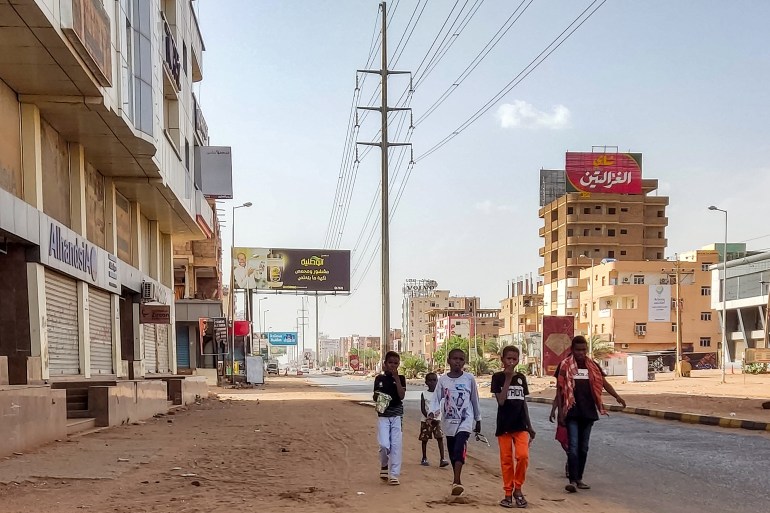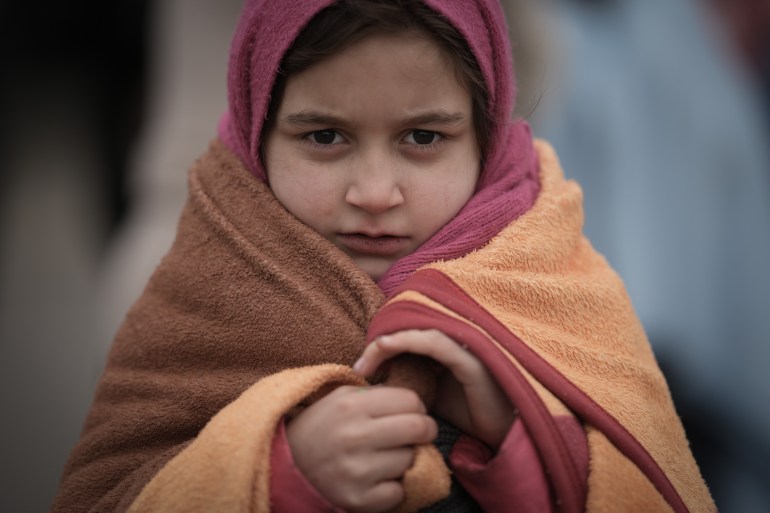‘Layers of vulnerability’: The children growing up in urban war
Marwa, an activist who advocates for vulnerable communities, describes the terror of growing up during the war in Yemen at an event on protecting children in urban warfare organised by the United Nations and the International Committee of the Red Cross (ICRC).
She described having to live under air raids, never going to school without feeling anxiety or ever playing outside without the watchful eyes of her concerned mother on her.
“When the war erupted, I was 11 years old. Frankly, I don’t remember much other than the fear and crying,” she said of the conflict, which started about eight years ago.
“Nothing can save you from an air strike. The missile can kill you and all your family members while asleep at home, and there’s nothing you can do to avoid dying under the rubble of your own home,” she said.
Child-specific harms of urban warfare
In a report published late last month, the ICRC tries to address what it calls a gap in knowledge about the child-specific harms caused in increasingly urbanised conflicts – from Gaza to Syria and Ukraine – that it says can help better respond to children’s needs in these complex environments.
The aid group said the report is the first holistic study dedicated specifically to children’s experience of urban warfare, drawing on existing literature in addition to dozens of interviews with experts and witnesses. It called the report necessary because an estimated one out of six children worldwide must navigate war as part of their lives.
It points out that children need to be assessed differently in war scenarios because they are less able than adults to accurately assess risks, are more vulnerable due to their physiology, will experience reverberating effects on their health in case essential services like water are disrupted and will undergo profound mental health changes that impact the rest of their lives.
Their experiences of urban warfare also vary based on criteria such as sex, age, disabilities and migration status while children could find their education disrupted in many ways, could be separated from their families in minutes, face displacement, or be subject to detention or even recruitment into armed groups.
The ICRC report also details how economic downturns caused by urban warfare can cause children and their families to adopt harmful survival strategies, such as child labour, early marriages, or relying on their children for things like evading checkpoints or picking their way through rubble.
‘The most vulnerable’
Another urban war has erupted since mid-April in Sudan, where two generals are fighting for control of the country and many ceasefires have failed to stop the conflict.
The deadly power struggle has triggered a significant humanitarian crisis with more than 1.2 million people displaced internally and another 400,000 fleeing into neighbouring states.

One of those states is Chad, Sudan’s western neighbour, which has seen tens of thousands of refugees – many of them children – pour over its border on foot. Some have been placed in UN-organised camps, but many continue to live in dire conditions, unsure of their future.
Witnessing the situation firsthand in Adre, Chad, Al Jazeera’s Zein Basravi described how he saw a mother fleeing war, carrying a boy who did not look older than one but was suffering from developmental issues and severe body contortions.
“There’s no way that he is in the right place to get the kind of help that he needs, the kind of help that the most vulnerable of the vulnerable need. There’s no way they can get the kind of help they need in a place like an impromptu camp in Chad,” he said.
“So, there are layers and layers of vulnerability. Things are only getting worse. These kids are going to continue to fall through the cracks and nobody knows when it’s going to bottom out.”
According to Basravi, children in Sudan and their families are facing a “generational uprooting” that is happening with increasing frequency and intensity compared with the past few decades and are being traumatised over and over again.
“We saw a child in the camp yesterday who lost a leg below the knee in fighting last year, and now he’s been displaced from Darfur entirely into Chad,” he said.
He also reported seeing children who were traumatised by seeing their fathers beaten, their mothers sexually assaulted and feeling certain they would die at checkpoints. That is not to mention the lack of clothing, food and water and exposure to diseases.
“When the kids arrive, they are completely shell-shocked, constantly crying,” Basravi said.
‘Perpetual state of fear’
Aside from constantly exposing children to bodily harm, urban conflicts could severely impact their mental health.
Children in these settings have regularly reported insomnia, stress, anxiety, panic attacks, grief, bedwetting, fear of loud sounds and nightmares, the ICRC report said.
It cited a 2013 study about the civil war in Syria that found 84 percent of adults and nearly all children considered the bombing and shelling as the main cause of psychological stress in children’s lives.
A 2022 study in Gaza found that children lived in a “perpetual state of fear, worry, sadness and grief” and that more than half of Gaza’s children have thought about suicide while three out of five reported practising self-harm.
To improve the situation, the ICRC sets out recommendations for states, fighting groups and humanitarian actors and for data collection and analysis concerning children in urban warfare settings.
It calls on states to put in place robust domestic legal frameworks and to implement higher standards as a matter of policy while drawing up recommendations for evacuations and for health and educational services and in connection with the detention of children.
It says armed actors should specifically address the protection of children in their urban warfare doctrine while calling on humanitarian actors to develop a fuller understanding of the risks and strengthen their capabilities in preventing and reducing harm to children.





